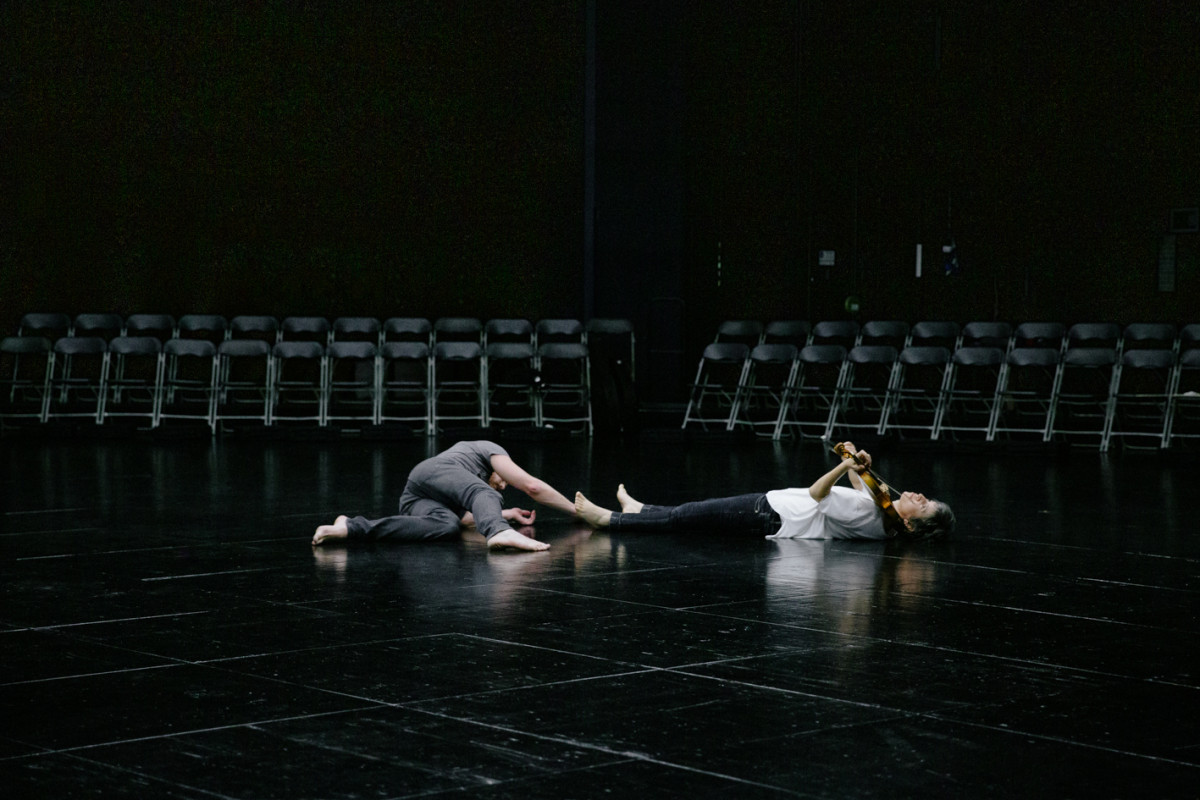Amandine Beyer &
Boris Charmatz
Dialogue entre un quatuor à cordes et quatre danseurs
conception : Amandine Beyer & Boris Charmatz
Nine years after their first collaboration with Anne Teresa De Keersmaeker on Partita 2, Amandine Beyer and Boris Charmatz once again join forces to create a dialogue between a string quartet and four dancers. Amandine Beyer, an instrumentalist and conductor, also likes to engage in cross-disciplinary projects. A choreographer and performer, Boris Charmatz has continuously challenged the relationship between his dance, the body, and music, but has worked less frequently with live musicians on stage. At the invitation of the Dijon Opera, the two artists have envisioned an evening based on two duets taken from pieces dating to the choreographer’s youth: herses (une lente introduction) and Con forts fleuve. The artists harness the gap and the tension between these two contrasting compositions to structure the dialogue, and, accompanied by the Kitgut Quartet, they invent their own pas de deux.
Boris Charmatz : At the time of the creation of Con forts fleuve or herses, I was listening to a lot of contemporary music. herses was created to compositions by Helmut Lachenmann. I was looking for materials, scores, but at the same time I was very interested in the working process of contemporary composers. […] These two duets — respectively from herses and from Con forts fleuve — do not have any dedicated score. As excerpts from longer pieces, they may be danced in silence. During La Ronde at the Grand Palais [January 2021], where both were presented, there was organ music by Stefan Fraunberger for herses, and music by Otomo Yoshihide — a Japanese musician — for the extract from Con forts fleuve. I’m interested in seeing Amandine apply her ear to these two duets, each of which has a different energy. We are taking a slightly different approach from how the relationship between dance and music is usually organized: for example, if I were choreographing a piece by Arcangelo Corelli around Amandine’s interpretation. Here, it’s the opposite: it’s about the way a musician sees dance, and how she interprets it through her choice of music. […]
Amandine Beyer : We will make music selections, rehearse, and prepare, but I want this approach to dance to leave room for surprise, spontaneity, and adaptability. I would like to hold on to the question “what are we going to do?” The question, “what music could produce an effect on this dance?” should not get a ready answer or be a given, but rather remain open-ended. At the moment, more and more people are asking me to do things that are not written down in stone — something that would have been impossible for me before. I was trained to play what is in the score. In the work of a musician, the musical piece is most often the end game, the goal you need to reach […]. It’s really by working with dance that I started to realize the relativity of the notion of error. In dance, you can get hurt, you can twist your ankle, but I feel like you can’t make a mistake like you can in music.
Extract from an interview with Amandine Beyer and Boris Charmatz by Gilles Amalvi, May 2021.
